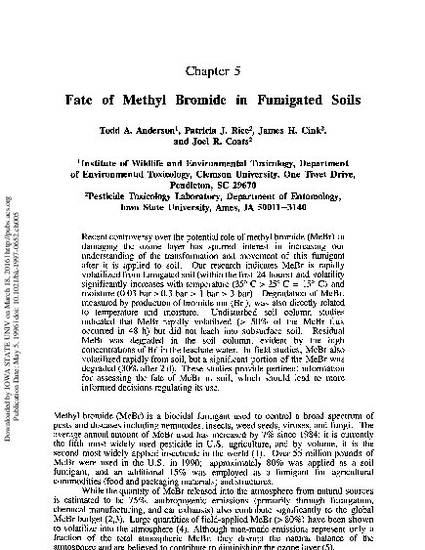
Recent controversy over the potential role of methyl bromide (MeBr) in damaging the ozone layer has spurred interest in increasing our understanding of the transformation and movement of this fumigant after it is applied to soil. Our research indicates MeBr is rapidly volatilized from fumigated soil (within the first 24 hours) and volatility significantly increases with temperature (35° C > 25° C = 15° C) and moisture (0.03 bar > 0.3 bar > 1 bar > 3 bar). Degradation of MeBr, measured by production of bromide ion (Br-), was also directly related to temperature and moisture. Undisturbed soil column studies indicated that MeBr rapidly volatilized (> 50% of the MeBr flux occurred in 48 h) but did not leach into subsurface soil. Residual MeBr was degraded in the soil column, evident by the high concentrations of Br- in the leachate water. In field studies, MeBr also volatilized rapidly from soil, but a significant portion of the MeBr was degraded (30% after 2 d). These studies provide pertinent information for assessing the fate of MeBr in soil, which should lead to more informed decisions regulating its use.
Available at: http://works.bepress.com/joel_coats/83/

Reprinted (adapted) with permission from Fumigants, 652(5); 42-52. Doi: 10.1021/bk-1997-0652.ch005. 1997 American Chemical Society.